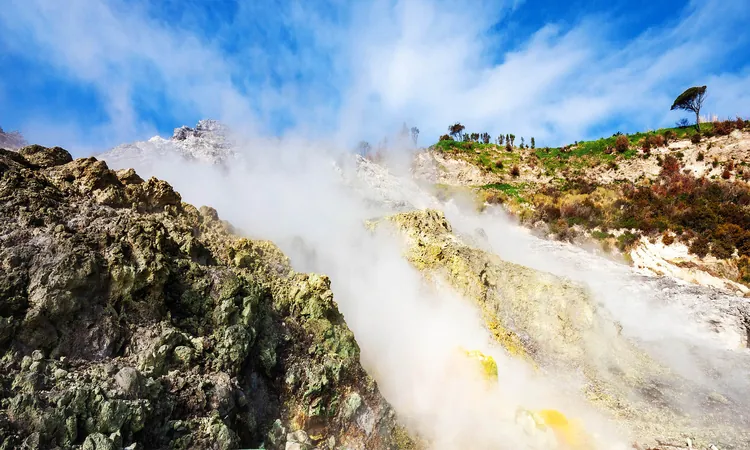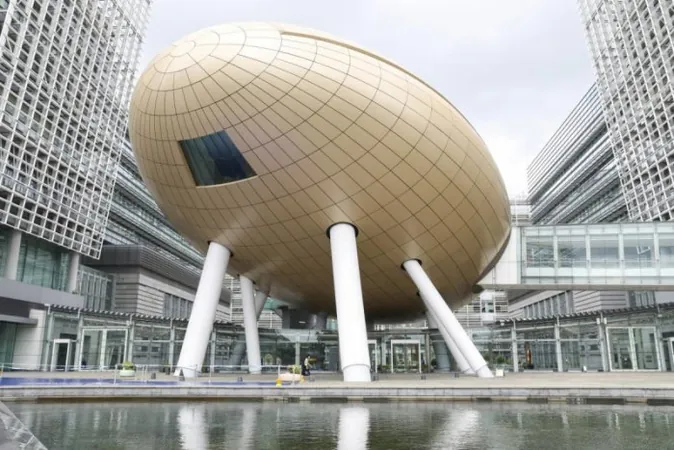
Supervolcano Alert: Campi Flegrei Shows Signs of Activity, But There's Hope
2025-08-18
Author: Ting
Waking the Giant: What’s Happening Under Naples?
Residents of Naples are witnessing unsettling signs of activity beneath their feet. The Campi Flegrei supervolcano, which last erupted in 1538, is exhibiting behaviors that could signify an impending eruption. Streets are cracking, the harbor is silting, steam is rising from the earth, and small earthquakes are rattling homes.
New Research Sheds Light on the Volcano's Behavior
Recent studies conducted in 2023 and 2025 have provided fresh insights into the workings of Campi Flegrei. These studies offer a dual narrative: while the supervolcano remains a significant threat, there are potentially manageable aspects that could mitigate its hazards.
CO₂ Levels Rising: What It Means
The 2023 study focused on carbon dioxide (CO₂) emissions, which spiked to alarming levels—4,000 to 5,000 tons per day in some areas. Traditionally, such spikes signal magma movement and an impending eruption, but researchers delved deeper. Surprisingly, they discovered that these increases were not solely due to magma rising but were also influenced by the hydrothermal system heating surrounding rocks.
Hydrothermal Activity: A Closer Look
This non-magmatic CO₂, sourced from the decarbonation of minerals, accounts for 20-40% of the total emissions. This revelation alters the narrative: a surge in CO₂ could also indicate changes in the hydrothermal system, which poses its own hazards.
Earthquake Patterns Revealed: The Mechanics of Pressure Build-Up
Fast forward to May 2025, and another group of scientists examined the source of recent earthquakes and ground uplift. Their findings illuminated a critical process: pressure is building in a sealed geothermal reservoir under Pozzuoli, rather than due to magma rising. As this pressurized system expands, fractures occur, leading to seismic activity.
Taming the Pressure: New Management Strategies for Safety
There’s a silver lining: understanding this pressure build-up means there are ways to manage it. By enhancing surface-water channels, monitoring groundwater levels, and removing excess fluids, experts believe they can alleviate potential explosive pressure—similar to managing a radiator to prevent overheating.
The Risk Remains: What’s Next?
While these developments offer hope, Campi Flegrei is far from safe. The ongoing hydrothermal heating and the potential for shallow quakes are constant reminders of the dangers that linger above a densely populated area. It is a race against time to implement proactive measures that could save lives.
A Shift in Mindset: From Monitoring to Managing
This new understanding necessitates a paradigm shift in how we approach volcanic risk. Instead of merely monitoring and preparing for evacuations, integrating civil engineering with geoscience can actively prevent disasters. Future strategies could include unclogging drainage systems and using wells as pressure release valves.
While these efforts will require careful design, community involvement, and rigorous monitoring, they raise the possibility of effectively regulating the risks associated with this colossal dormant giant.
In the world of supervolcanoes, Campi Flegrei presents a unique situation: it may not be an unstoppable force of nature but rather a system we can learn to control.






 Brasil (PT)
Brasil (PT)
 Canada (EN)
Canada (EN)
 Chile (ES)
Chile (ES)
 Česko (CS)
Česko (CS)
 대한민국 (KO)
대한민국 (KO)
 España (ES)
España (ES)
 France (FR)
France (FR)
 Hong Kong (EN)
Hong Kong (EN)
 Italia (IT)
Italia (IT)
 日本 (JA)
日本 (JA)
 Magyarország (HU)
Magyarország (HU)
 Norge (NO)
Norge (NO)
 Polska (PL)
Polska (PL)
 Schweiz (DE)
Schweiz (DE)
 Singapore (EN)
Singapore (EN)
 Sverige (SV)
Sverige (SV)
 Suomi (FI)
Suomi (FI)
 Türkiye (TR)
Türkiye (TR)
 الإمارات العربية المتحدة (AR)
الإمارات العربية المتحدة (AR)